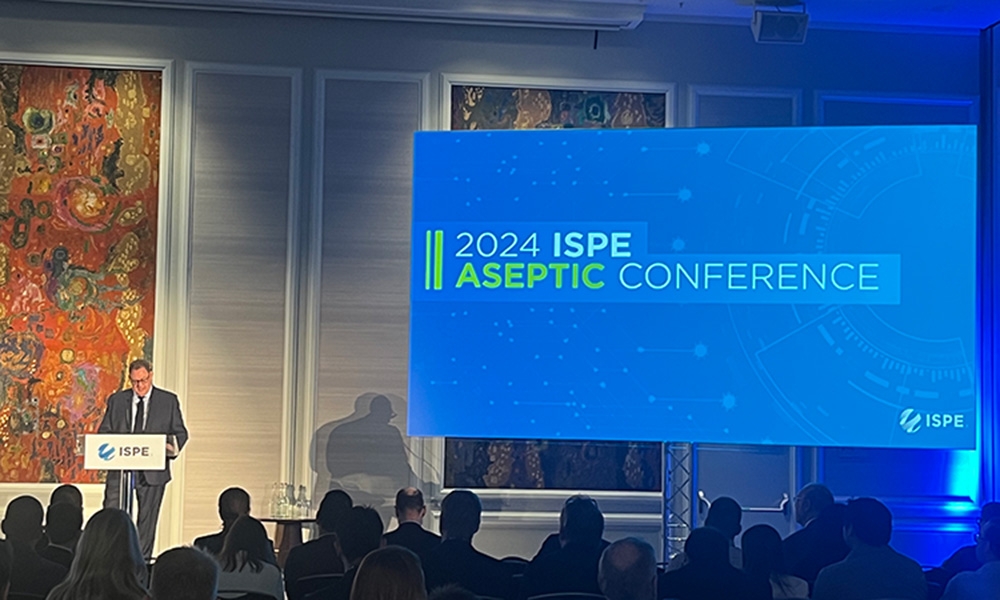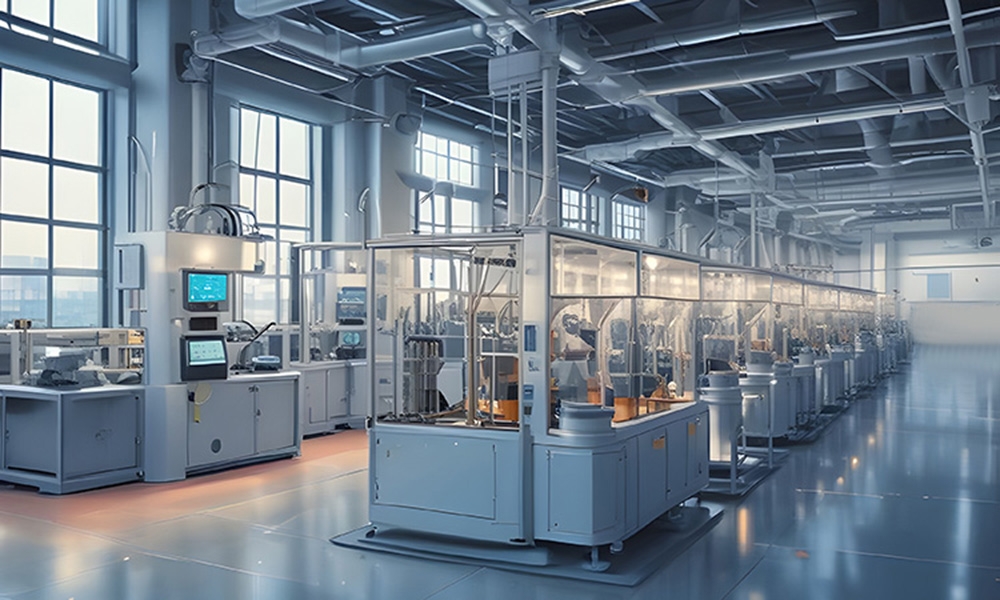2017 ISPE Annual Meeting & Expo Gets Underway

Greetings from San Diego!
“America’s Finest City” welcomed some 1,600 attendees, including 255 delegates from 34 countries from outside the United States, to the 2017 ISPE Annual Meeting & Expo at the San Diego Marriott Marquis & Marina on 29 October. The event’s signature, “Driving Innovation to Advance Patient Therapies,” anchors the education sessions and workshops on patient-centric concerns and innovation in pharmaceutical manufacturing. Attendees will explore, strategize, develop tools, and determine how to navigate organizational and regulatory complexities to advance patient therapies.
This year’s ISPE Annual Meeting & Expo runs until Wednesday, 1 November, and features 235 speakers and leaders, and 91 sessions across seven concurrent tracks. Today, Sunday, 29 October, an additional four featured sessions covered 3-D printing technology, ICH (International Conference on Harmonization) Q12, biotech facility design, and career strategies for early-career professionals .
Focus on Education
Annual Meeting certainly is a time for networking and education, yet it is also an opportunity for ISPE to take its members’ pulse on a variety of topics. This year, ISPE is conducting six focus groups with a total of 46 participants to look at training: formats, delivery methods, location, and certification. As part of the process, Wanda Neal, VP of Program Development, together with an ISPE team of five staff and Board members, benchmarked organizations around the world on how training is defined, delivered, and perceived. Neal said the intention is to develop a global education strategy by Q1 2018. “We want to find out what industry wants and what our members need so that we can better deliver education across all our platforms .”
Women in Pharma Broadens Presence
Women in Pharma takes center stage this year, just two short years after its launch at the 2016 ISPE Annual Meeting & Expo. ISPE Board director Fran Zipp spearheaded the formation of Women in Pharma to support women in the industry and was co-chair of the initial series. Donations helped establish a scholarship fund for students at the University of Georgia, with a first scholarship being awarded in September to Wided Najahi-Missaoui, MS, PharmD.
In addition to Sunday’s three education sessions, the group hosted six networking dinners around town Sunday night, each with a different theme.
The first Women in Pharma education session on Sunday afternoon, “Career Strategies for Early-career Professionals,” spotlighted the mentoring relationship. The session leader was Kerren Bergman, Senior Director, Human Resources and Internal Systems, Hyde Engineering and Consulting Inc., and the two speakers were Kelly Scalva, Proposal Manager, Hyde Engineering and Consulting Inc., and Kelly Keen, Project Portfolio Management, BPm F Hoffman-LaRoche Ltd. Their topics, respectively, were “Engineering + Mentoring: A Case Study,” and “Herstory – How Mentoring and ISPE Made Me Who I Am Today.”
In her opening remarks, Bergman invoked Greek mythology and its definition of a mentor as a wise and trusted counselor, “someone with whom you develop a very deep connection and who can encourage you,” she said. “You need someone to see you, your potential, and support you as you grow professionally.”
Scalva’s presentation addressed how young engineers need mentoring to succeed, how the relationship can play out, and how one becomes a mentor or mentee. She cited a statistic from a Robert Walters Recruiting study stating that, while 83% of professionals would like to be involved in a mentoring program, only 29% are in workplaces that offer them. “I would encourage you to find a workplace that does encourage mentoring and has programs in place,” she said.
Her case study (featured in the November-December issue of Pharmaceutical Engineering magazine) of a mentoring relationship between herself, a millennial, and Bergman, a Gen Xer, discusses lessons learned and the joint successes both have seen in their personal and professional lives.
New Board member Kelly Keen, Project Portfolio Management, BPmF Hoffman-LaRoche Ltd., told a personal story of mentoring in her presentation “Herstory: How Mentoring and ISPE Made Me Who I Am Today.”
“So you hear a lot about history, not about herstory,” said Keen to an enthusiastic audience. “Let’s hear more herstories!” She shared an overview of her career trajectory and mentorship experiences, along with the role ISPE membership has played in her professional life. Look for a blog from Kelly Keen in the coming week.
Opening Keynotes
A Seat at the Table
The ISPE 2017 Annual Meeting & Expo opening ceremony on Sunday afternoon was an exciting one for attendees, featuring industry leading keynote speakers Pam P. Cheng, Executive Vice President of Global Operations and IT at AstraZeneca, and Enno De Boer, PhD, Partner and Leader of Digital Manufacturing North America at McKinsey & Company, Inc.
Michael Arnold, outgoing ISPE Board Chair, delivered introductory remarks in which he offered an overview of ISPE strategic plan milestones. He focused on achievements in three strategic areas: local and regional relevance, operational strength, and providing compelling member and industry value. Among the highlights was the creation of an ISPE regulatory steering committee, to be chaired by Roger Nosal, Vice President & Head of Global Chemistry, Manufacturing & Controls, Pfizer, Inc. “The regulatory steering committee will help define and set the priority focus for regulatory activities, working with regulators around the world, and determine how to partner with like-minded organizations around the industry,” said Arnold. He also spoke about the recently announced ISPE Foundation, which he will chair. “The ISPE Foundation will provide an essential platform for ISPE to raise funds for Women in Pharma, Young Professionals, and students.”
John Bournas, ISPE President and CEO, then took the stage to present the first keynote speaker, Pam P. Cheng. Before introducing Cheng, he took a moment to share a personal story about illness and medicine that, he said, “made [him] more aware of how fundamental our collaboration is, and how crucial it is to rely on safe and effectively manufactured medicines.
“Being on the patient side, it was reassuring to know that everything that was and is being administered is efficacious. It gave us confidence. And that is the area that we all work in. And what we do here at ISPE is to share that pharmaceutical knowledge to ultimately save lives. This is our maxim, our reason for being.”
Using ISPE’s signature “Connecting Pharmaceutical Knowledge,” Bournas outlined the many ISPE member benefits that have been announced, enhanced, and planned for the coming year. He then presented Pam P. Cheng, “a woman in pharma who leads 17,000 people, one-third of AstraZeneca’s workforce, and manages a budget of $5 billion.”
Cheng’s keynote address, “Ensuring a Seat at the Table for Manufacturing Operations,” delivered in TED-talk style, made the case for manufacturing operations to be at the decision-making table at a time of complex operating environments, increasingly robust pipelines, processes and device technologies, and accelerated drug development and approval timelines.
“I have to start with an apology,” Cheng began. “We are in a beautiful city, it’s sunny outside, and you are stuck in this room, listening to me. But this topic is likely near and dear to your hearts, so listen up.”
Manufacturing operates at the heart of the value chain but doesn’t always have a seat at the table, she said, and explained what she meant: “A seat at the table means manufacturing processes are factored into the enterprise decision-making process. If you are seen as a critical part of the enterprise’s value chain, it becomes natural for others to seek out your opinion, and you are pulled in.”
Bringing a molecule to market is a complex process, Cheng said, as is making drugs and forecasting their commercial timing. Equally challenging is getting the right capacity in the right place at the right time: “This is the holy grail of strategic planning,” she said. Creating additional capacity often requires a long lead time, which varies depending on the type of technology and existing retrofit compared with building something new.
Collaboration with R&D and commercial is important, Cheng said, because manufacturing needs to understand what is coming down the research pipeline and how to prepare for it. “At times, we can influence early development. When they can take into consideration reliability and scalability, as well as the ability to transfer, they directly enhance the probability of success during a product launch.”
With new modalities and complexities, and modes of delivery, as well as a biopharma industry changing faster than ever, the life cycle of a medicine is being accelerated. “We are seeing examples of speed-to-market in less than five years, compared with 10 or 15 years in the not-so-distant past,” she said.
Cheng’s overriding message was one of inclusion: “You need to reach out and understand your colleagues in science, research and development, and commercial. This will help you develop your business acumen, so you are better informed to do your job.”
Cheng closed her address by reminding the audience why we are in the business of what we do: “to deliver medicines to patients when they need it, at the right cost, and with the safety and efficacy we promise. That alone makes it difficult for the rest of your organization to not include you at the decision-making table.”
The Next Frontier of Innovation
Enno de Boer, PhD, McKinsey & Company Partner and Leader of Digital Manufacturing, presented the second keynote, “Digital Manufacturing: The Next Frontier of Innovation.” Clearly passionate about his topic, de Boer told conference attendees “we are entering the fourth industrial revolution. Technology is advancing faster than ever. The Internet of Things [IoT] will make us even more connected than we are now. And flexible automation will allow us to move from a reactive shop floor to an autonomous self-organizing factory.”
Connectivity is rapidly evolving, he said, and the IoT already connects 8.4 billion devices—more things than there are people on the planet. There were over 700 IoT platforms at last counting, and three hyper-scalable platforms are being developed. Already, 15% of production assets are connected.
At the same time, he noted, the manufacturing sector is sitting on the largest amount of production data it has ever had, but 99% of it is not being used for decision-making. “We’re using only 1% of that information. That will change dramatically with artificial intelligence [AI].”
The last 36 months have seen incredible leaps in computing power, de Boer continued. “During this time, we have become able to train our AI models 60 times faster, at less than 1% of the previous cost. Our models are constantly improving, and AI speech recognition is already at the level of the human brain. With this we can make use of all the data we are sitting on.”
Automation is another important development: 60% of all manufacturing jobs on the planet can now be automated. Yet industrial robots have a penetration rate of less than 5%.
“Is this technology really ready for scale and is it mature?” he asked. “Yes, it is.” The automotive industry has invested billions of dollars to bringing it to scale in their factories—it’s a very mature environment. “Just two years from now,” he predicted, “we will see fully autonomous cars on the streets. Why can’t we get a fully autonomous factory? The technology is there.
“The future of manufacturing will be fundamentally different from what we have today. We will see the convergence of products and services. New value-added services and business models will be enabled.”
De Boer predicted that technology will transform the future of production with four paradigm shifts:
- Autonomous manufacturing, embedded into an
- End-to-end value chain, embedded into a
- Supplier ecosystem, which enables
- Value-added services and business-model innovations.
“This is where the value creation is happening,” de Boer said. “And how will we get there? The same way as the automotive industry: we have identified 50 digital applications that are ready for deployment. These are the stepping stones toward an autonomous production system.”
De Boer used a consumer electronics site in China as an example. When the company deployed a real-time IoT-based performance-management system to focus on solving problems, issue resolution timeframes shrank from weeks and months to hours and days.
Another electronics manufacturer has achieved almost full automation, de Boer continued. In doing so, they’ve dropped head count by 87%, increased output by 200%, and decreased quality issues by 50%.
“Technology fusion must happen quickly,” de Boer explained. “It’s very important to not just exchange technology, but radically redesign the system.”
To speed the transformation, he said, McKinsey has developed a digital transformation approach in collaboration with the World Economic Forum:
- Mobilize the organization;
- Strategy: Set the vision and the value to capture;
- Spark innovation by demonstrating the value at stake; and
- Scale up: Full-value capture.
“For this, we need training centers,” de Boer said. “Over the last 12 months, we have invested heavily in setting up capability centers—smart model factories that allow you to jump into a manufacturing environment.
Because of its regulatory framework, de Boer said, the pharmaceutical industry has more challenges innovating processes. It’s important to work in consortiums like this [conference] to determine what you want to change in the processes and bring the regulators along with you. The disruption will happen—probably from the outside. So, you have to be prepared for the future.”


